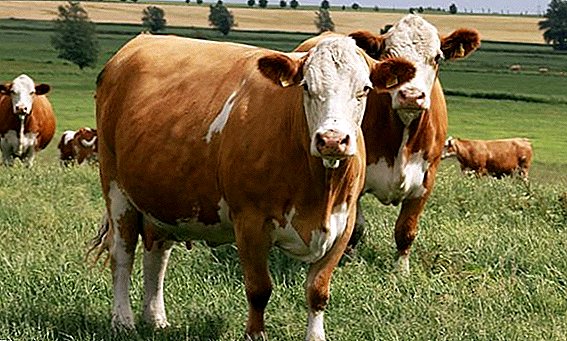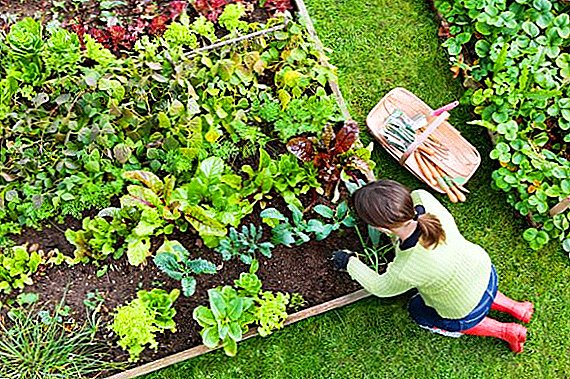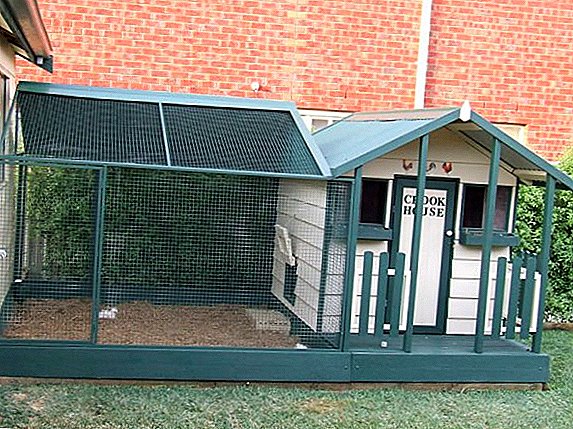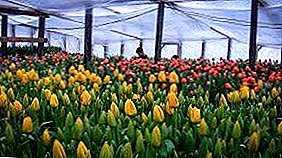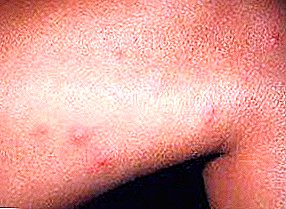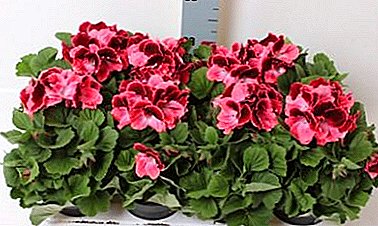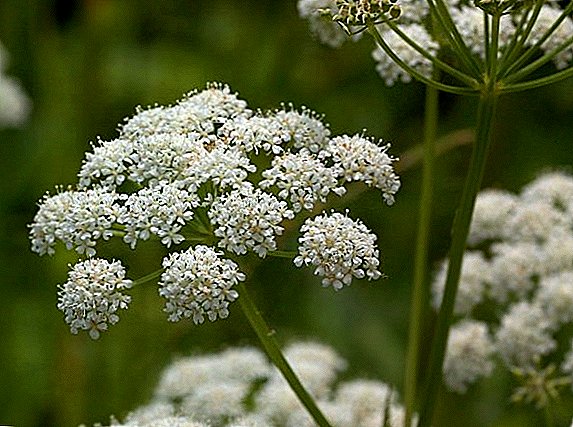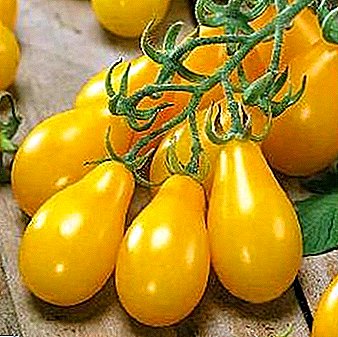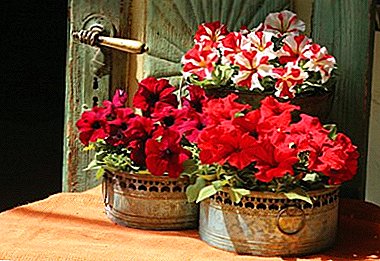
Low-growing petunia is an ornamental plant that is actively used when creating flower arrangements in a flowerbed or in a garden.
This culture is characterized by large and bright inflorescences. There are a sufficient number of varieties that, with proper care, will delight with long and abundant flowering. The following article describes the varieties of stunted petunias and features of their care.
Botanical description and history
Stunted petunia hails from South America. It is a herbal perennial crop, which is grown in Russia as an annual. At home, the plant will not grow, but for the decoration of balconies and windows from the outside the culture is suitable, as well as possible.
The flowers of short-growing petunias resemble a funnel in shape. They can be large and small flowering, terry or simple type.
The color palette is extensive:
- white;
- red;
- blue;
- purple;
- Violet.
There are also varieties in which the petals are painted in 2 shades and there is a colorful pattern. The edges of the petals can be fringed and smooth.
Varieties with the mark of F1, their names, features and photos
Low-growing large-flowered petunia includes many plant varietiesdiffering in a variety of colors.
The most popular varieties are presented below.
Duddy Series
This is a hybrid that includes flowers of 6 different colors. This variety is characterized by dark streaks and light edges on the petals. The plant itself looks very original.

Pikoti Series
This variety has large and early-flowering flowers of small size.. The petals on the edge are edged with white color.

Prim Sunshine
This is a powerful culture, the height of which reaches 35 cm. The flowers are also large, as their diameter is 10 cm.

Storm F1
This type of petunia is compact. At the same time, the flowers themselves are large, and the color is represented by 8 different colors.

Anastasia
This petunia grows as a compact bush.. The flowers are purple and velvety; there is a white border around the edges of the petals.

Fantasy
This is a mix of different flowers, different corrugated petals. Feature of the variety in long flowering.

Where and how to plant?
The subsequent development and growth of petunia depends on the correct planting.
Therefore, it is important to observe the following recommendations:
- Choose a variety of stunted petunias. Since the material for planting is shallow, rare sowing is required. A coated material is suitable, since it is much more convenient to work with it.
- Planting work carried out in February and March. The end of winter is suitable for planting only if auxiliary lighting will be used.
- Planting material spread on the surface of the soil, without closing it. Cover the seeds with a layer of soil is not required.
- After planting, moisten the ground regularly with water.
- Capacity with seedlings cover film.
If all recommendations have been followed, the seedlings will appear in 1-1.5 weeks.
Soil requirements
Low-growing petunia grows in loose, light and nutritious soil. You can buy ready-made substrate or prepare it yourself. To do this, use the following components:
- peat - 2 parts;
- sod land - 2 parts;
- sand - 1 part.
Lighting and location
A well-lit area is suitable for planting crops. If you plant a petunia in the shade, it will begin to stretch, form large leaves and in a small amount of flowers. This will adversely affect the appearance of the culture. Also, the place must be protected from drafts, otherwise they will injure the delicate flowers of the plant.
How to care?
Watering
 For full growth of stunted petunias, timely watering is extremely important. During moistening, the water should be poured under the root, make sure that it does not fall on the flowers, as this may destroy them. During the heat wave, watering is done 2 times a day - in the morning and in the evening.
For full growth of stunted petunias, timely watering is extremely important. During moistening, the water should be poured under the root, make sure that it does not fall on the flowers, as this may destroy them. During the heat wave, watering is done 2 times a day - in the morning and in the evening.
Also do not forget about spraying. This will be an excellent prevention of the appearance of spider mites. Water for irrigation use separated and room temperature.
Top dressing
Successful development of the flower and its long flowering is impossible without dressings. It is worth making them once every 7-10 days from the moment of landing until August. You can use complex formulations with a high content of potassium. Humus or compost is also suitable, but not fresh, as this will lead to the development of fungal diseases.
Common diseases and pests
When the proper care of the plant is observed, diseases and pests are extremely rare. But such factors can weaken the immune system:
- lack of moisture;
- landing thickening;
- lack of sun;
- soil acidification.
The most common viral and bacterial diseases of stunted petunias are:
- cucumber and tobacco mosaic;
- leaf galls;
- potato and tomato viruses;
- tobacco necrosis.
The affected culture will have to be removed and burned. As a preventive measure, it is necessary to deal with aphids in a timely manner, which is a carrier of these diseases.
 Also stunted petunias can be affected by the following fungal diseases.:
Also stunted petunias can be affected by the following fungal diseases.:
- powdery mildew;
- late blight;
- blackleg;
- brown spot.
To cope with fungal infection can be with the help of drugs such as Fitosporin and Trichodermin.
Plant pests are dangerous:
- aphid;
- slugs;
- pincers;
- whitefly.
Insecticides such as Aktara and Confidor are used to eliminate parasites. You can fight spider mites with the help of such drugs - Demitan and Aktellik. Slugs can be discouraged if metaldehyde is scattered over the soil.
Breeding features
Cuttings
This method of reproduction is the most difficult. It is better to use for the cultivation of decorative varieties of petunia.
The cuttings are carried out in early March, and throughout the spring and summer the plant will bloom in open ground. But the full growing season will begin only at the end of winter. During this period, lighting and high-quality hydration are very important. Provide the plant with full coverage needed for 16 hours.
When a lush bush is formed, you can cut the cuttings and plant them in a nourishing soil for rooting. After a week, the roots will grow, and the plant can be transplanted in separate containers or in open ground.
Seeds
Using the seed method of reproduction, it is not always possible to get a full-fledged seedlings. The reason is that it is very difficult to acquire high-quality planting material. In addition, the seedlings require careful care, which is beyond the power of inexperienced growers.
Important! If you plant the seeds at the end of winter, you will need to take care of additional lighting. In addition, these plants will often be sick fungus. This can be prevented by monitoring the soil moisture.
Possible problems
 When growing stunted petunias, the following problems may occur.:
When growing stunted petunias, the following problems may occur.:
- Lack of flowering and unattractive culture. This is possible with a strong overmoistening of the earth or prolonged rains. If possible, you need to move the flowers to the shelter and normalize watering.
- Lack of abundant flowering. This occurs when defective feeding or not removing faded buds. If they are not removed in a timely manner, the plant will spend a lot of effort on the formation of fruits, not new inflorescences.
- Lack of a magnificent and beautiful look. The formation of a plant will help eliminate this problem. To do this, you need to pinch the shoots above the 3rd leaf. This is a great stimulation for bookmarking flower buds.
Low-growing petunia is an interesting and beautiful plant that grows well on open ground. In terms of growing it is unpretentious, so even a beginner can. But even with insufficient attention, the flower may die or be constantly ill.



